Every anime fan has trust issues when it comes to live action adaptations.
We’ve all been burned before. You see the announcement, and your first reaction isn’t hype, it’s fear.
We’ve watched our favorite characters get butchered, our beloved stories squeezed into incoherent messes, and a plot that feels like it was written by someone who only skimmed the Wikipedia summary.
For years, the track record was… well, let’s just say it was rough. It felt like a cursed genre, a graveyard of good intentions and terrible wigs.
But here’s the thing: not all live action anime are disasters. Some are actually great. A few even outshine the source material in ways nobody expected.
Don’t believe me?
Let’s talk about them, the surprisingly good ones. The movies and series that took on the impossible challenge of adapting anime into live action… and actually pulled it off.
What is Live Action Anime?
At its core, live action anime refers to film or TV adaptations of anime, manga, or light novel stories that started in 2D but are reimagined with real actors, sets, and special effects.
Think of it as cosplay with a movie budget. Bud ideally, with good acting and cinematography too.
Here’s where it gets tricky. Not all live action adaptations play by the same rules.
Some stay true to the source material, recreating scenes almost frame for frame. They try to bring the anime’s world to life as faithfully as possible, from costumes to camera angles.
Others take a reimagined approach, changing the story or tone to reach a different audience. Instead of copying the plot, they expand it or explore something new.
And then there are the hybrid cases. This kind of adaption aim to capture the feeling of the source material without sticking too rigidly to the plot.
At its best, a live action anime isn’t a copy. It’s a translation. It takes the soul of the story and reshapes it into something that feels real in our world.
Best Live Action Anime
- Edge of Tomorrow (2014)
- Rurouni Kenshin (2012–2021)
- Alita: Battle Angel (2019)
- One Piece (2023)
- Speed Racer (2008)
- Pokémon: Detective Pikachu (2019)
- Death Note (2006 & 2008)
- Alice in Borderland (2020-Now)
- Kingdom (2019-2024)
- GTO: Great Teacher Onizuka (1998-2024)
- Blade of the Immortal (2017)
- Bleach (2018)
- Cowboy Bebop (2021)
- Grand Blue (2020)
- Yu Yu Hakusho (2023)
- Gokusen (2002-2009)
- Gintama (2017-2021)
- My Love Story!! (2015)
- Assassination Classroom (2015-2016)
- Kakegurui (2018-2021)
- From Me to You: Kimi ni Todoke (2010-2023)
- Nodame Cantabile (2006-2010)
- Gantz (2011)
- Your Lie in April (2016)
- Parasyte (2014-2015)
- Anohana: The Flower We Saw That Day (2015)
- Sonic the Hedgehog (2020-2024)
1Edge of Tomorrow (2014)
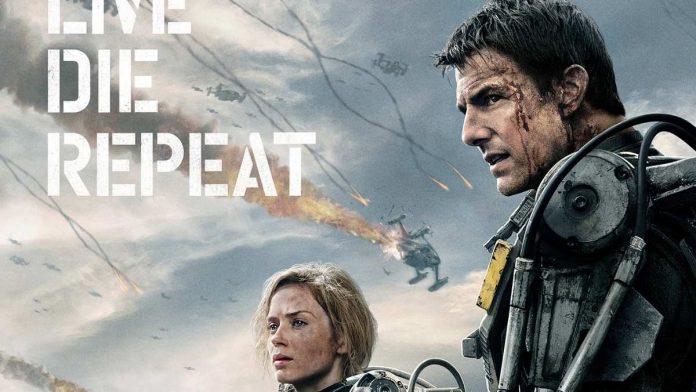
Most people don’t realize Edge of Tomorrow (yes, that epic Tom Cruise sci-fi flick) is actually based on a Japanese light novel called All You Need Is Kill by Hiroshi Sakurazaka.
And honestly? It’s one of the best examples of Western cinema translating anime-style storytelling without losing the spirit.
Tom Cruise plays a soldier trapped in a time loop, dying over and over as he tries to survive an alien invasion. Each time he dies, the day resets, and he comes back stronger.
It’s mecha philosophy meets time-loop chaos, with Emily Blunt absolutely owning the screen as battle-hardened warrior Rita Vrataski.
While Hollywood stripped away the overtly Japanese details, the heart of it all remains: redemption and relentless self-improvement through struggle.
Edge of Tomorrow is slick, clever, and proof that a Japanese novel can evolve into a global blockbuster without losing its narrative DNA.
Watch Edge of Tomorrow trailer:
![Edge of Tomorrow - Official Trailer 1 [HD]](https://i.ytimg.com/vi/vw61gCe2oqI/maxresdefault.jpg)
2Rurouni Kenshin (2012–2021)
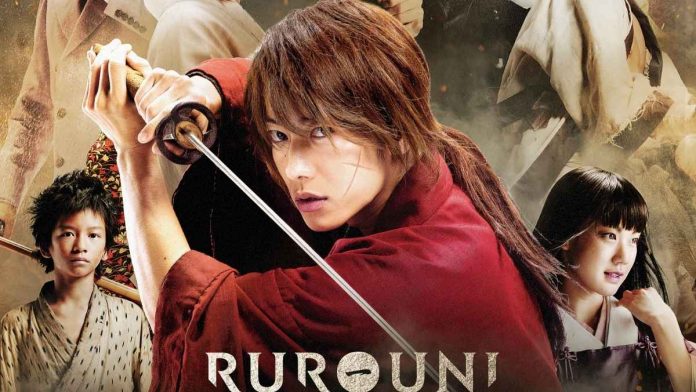
If there’s a holy grail of live action anime done right, Rurouni Kenshin is holding it with both hands.
Spanning five movies (yes, five), this adaptation of Nobuhiro Watsuki’s manga is the gold standard for bringing anime to life.
It’s stylish, emotional, and packed with sword fights so perfectly choreographed they feel ripped straight from the panels.
Takeru Satoh shines as Himura Kenshin, the wandering swordsman seeking redemption for his bloody past by protecting others. His performance blends grace and guilt in equal measure.
The films also nail the period setting. The Meiji Restoration era feels alive and authentic. Every costume, every location, every quiet detail sells the world completely.
The commitment to practical stunts and grounded effects makes every fight feel visceral and real. Despite spanning five entries, the series never loses momentum.
Rurouni Kenshin is the kind of adaptation even anime skeptics can appreciate. If every future live action anime aimed for this level of craft and heart, fans could finally relax.
Watch Rurouni Kenshin trailer:

3Alita: Battle Angel (2019)
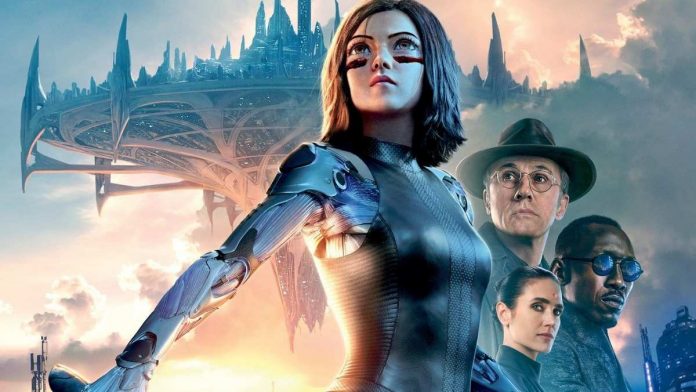
When the first Alita: Battle Angel trailer dropped, the internet went feral. Those giant anime eyes were all anyone could talk about. “Uncanny Valley!” they cried. “Why is she like that?”
Then the movie came out… and fans went, “Oh. Oh, this works.”
Based on Yukito Kishiro’s cyberpunk manga Battle Angel Alita (Gunnm), it follows a cyborg girl rediscovering her humanity in a post-apocalyptic world.
Rosa Salazar’s performance as Alita, which is motion-captured and digitally enhanced with those iconic oversized eyes shouldn’t have worked, but somehow it did.
She radiates warmth and emotion, grounding a world of metal limbs and gladiator-style chaos with an honest, beating heart.
The story isn’t perfect. It tries to juggle too many arcs in one film, and a few lines of dialogue lean a bit cheesy. But Alita manages to earn every moment of sincerity.
The fight scenes are stunning: fast, fluid, and faithful to the manga’s energy. Every battle feels alive, driven by emotion rather than just spectacle.
It’s one of those rare Hollywood anime adaptations that understands the heart of the story, not just the cool visuals.
Fans are still begging for a sequel. And finally, after all these years, Alita 2 is really happening.
Watch Alita: Battle Angel trailer:
![Alita: Battle Angel | Official Trailer [HD] | 20th Century FOX](https://i.ytimg.com/vi/w7pYhpJaJW8/maxresdefault.jpg)
4One Piece (2023)

The day Netflix announced live action One Piece, the fandom exploded, not with hype, but with fear.
“How could you possibly adapt One Piece?!” fans cried. “You can’t just CGI Luffy’s arms and call it a day!”
And yet… Netflix pulled off a miracle.
The live action One Piece isn’t just “not bad,” it’s good. Like, “the creator himself approved it” good.
Eiichiro Oda’s involvement made all the difference. He personally oversaw production, and it shows in every goofy, heartfelt, action-packed frame.
The show embraces the source material’s silliness (Luffy’s stretchy powers look great!) without ever being embarrassed by it.
It respects the tone and captures the spirit of adventure, friendship, and big dreams that make the anime so beloved.
Every episode captures that blend of humor, heart, and high-seas adventure that defines the series.
The production design is stunning, and the adaptation streamlines story arcs for better pacing while keeping every emotional beat intact.
If you were skeptical (like I was), this one will make you a believer. Among live action anime adaptations, One Piece sits firmly at the top tier.
Watch One Piece trailer:

5Speed Racer (2008)
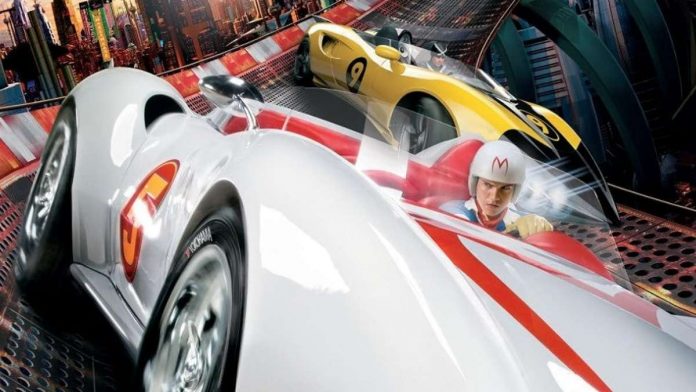
Back in 2008, when the Wachowskis (yep, The Matrix creators) released Speed Racer, people didn’t know what hit them. Too colorful. Too stylized. Too “cartoonish.”
But that’s exactly what made it great.
Based on the 1960s anime classic, the film follows Speed Racer, a young driver racing for love, family, and justice as he zooms through wild, technicolor dreamscapes.
The critics? Confused. The box office? Meh. The fans, years later? “Wait… this actually slaps.”
Speed Racer was ahead of its time. Its editing mirrors anime’s visual language. It doesn’t try to be realistic racing show; it embraces anime logic and runs with it.
The family story is warm and funny, and the racing scenes? Pure, unfiltered adrenaline. It’s a love letter to the original’s spirit, not a gritty reboot.
If you missed it back then, do yourself a favor and give it another lap. It’s not just one of the best live action anime movies, it’s one of the most unique films of the 2000s.
6Pokémon: Detective Pikachu (2019)
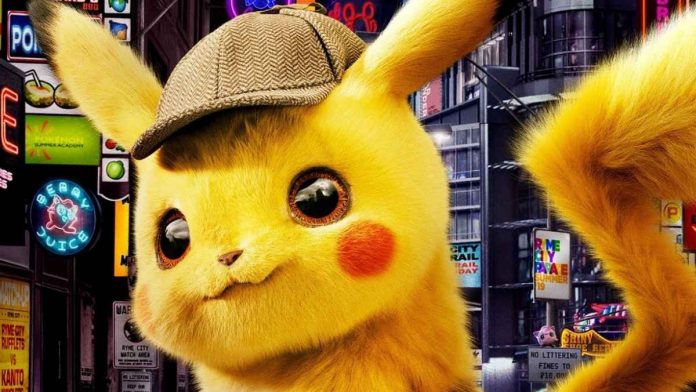
Pokémon: Detective Pikachu proved that Hollywood could make a Japanese franchise work without gutting its charm. It didn’t just work, it won people over.
The key to this movie’s success is right there in the title: Detective Pikachu.
It’s not a retelling of Ash’s journey, but a new, noir-inspired story that uses the Pokémon world in creative ways.
Getting Ryan Reynolds to voice Pikachu was a stroke of genius. He brings humor and warmth in perfect balance, and the CGI Pokémon look incredible, realistic yet still adorable.
Ryme City feels like the perfect blend of fantasy and reality, a place you could actually imagine living alongside Pokémon.
It’s not a complex movie, but it’s joyful, funny, and packed with Easter eggs for longtime fans.
Detective Pikachu is a good example of how to make a live-action adaptation feel like a world fans grew up loving without losing its charm in translation.
And honestly, it gave us the Pikachu we didn’t know we needed.
Watch Pokémon: Detective Pikachu trailer:

7Death Note (2006 & 2008)
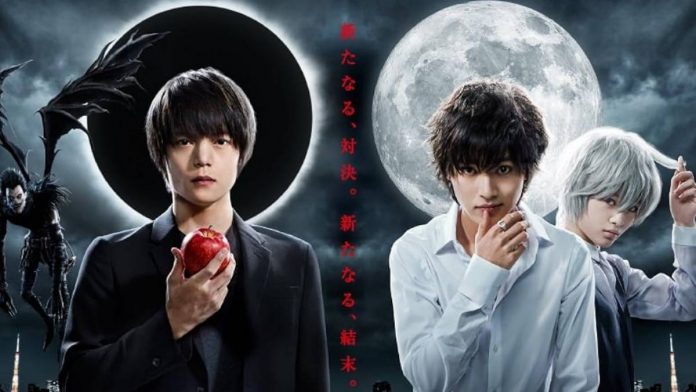
Before Netflix’s Death Note turned Light Yagami into a meme, Japan gave us two excellent live action Death Note movies: Death Note (2006) and Death Note: The Last Name (2008).
And they are phenomenal.
The first two films nail the cerebral duel between Light Yagami and L filled with tension, intellect, and just enough melodrama to keep you hooked.
Tatsuya Fujiwara’s Light is terrifyingly charismatic, and Kenichi Matsuyama’s L embodies every twitch of eccentric genius.
The tension between them is electric, and the direction channels the anime’s dark atmosphere perfectly.
Together, the films distill the cat-and-mouse mind games into tight, gripping thrillers. They trim the story without losing its moral complexity, a rare balance few adaptations manage.
Then came the third movie, L: Change the World. And… well, let’s just say it’s one for completionists. It lost the sharp writing that made the originals pop.
Still, those first two Death Note films remain classics. As for the Netflix version? Yeah… let’s not talk about that.
8Alice in Borderland (2020-Now)

Before Squid Game went viral, Alice in Borderland had already mastered the “deadly games in dystopia” formula with more style, emotion, and heart.
Based on Haro Aso’s manga, the series follows Arisu, a gamer suddenly trapped in an empty Tokyo where players must take on life-or-death games to survive.
Each game tests intelligence, teamwork, and morality in ways that hit harder than you’d expect.
What really makes the live action version of Alice in Borderland stand out is its tone. It’s dark and tense, but never soulless.
The visual design of empty Shibuya streets is haunting, and the performances, especially from Kento Yamazaki and Tao Tsuchiya, give it depth beyond the spectacle.
Season 2 raises the stakes even higher, deepening the characters and the themes without losing an ounce of thrill.
Alice in Borderland proved that Netflix could also nail the art of adapting anime-inspired stories into binge-worthy, high-quality television.
It’s stylish, smart, and, dare I say, better than most Hollywood thrillers.
9Kingdom (2019-2024)

If you’re craving something grand, Kingdom will blow you away.
Adapted from Yasuhisa Hara’s long-running manga, this historical epic set in China’s Warring States period is massive, packed with huge battles, political intrigue, and sweeping cinematography.
Shinsuke Sato, who also directed Gantz and Bleach, brings real scope and power to every frame.
Kento Yamazaki as Xin brings intensity and ambition to the role, embodying a warrior’s hunger for greatness.
The choreography and scale make it feel like Japan’s answer to Game of Thrones... maybe minus the dragons and with way more swordplay.
It’s visually stunning, emotionally charged, and proof that Japan can deliver large-scale live-action epic wars when given the budget and respect they deserve.
10GTO: Great Teacher Onizuka (1998-2024)
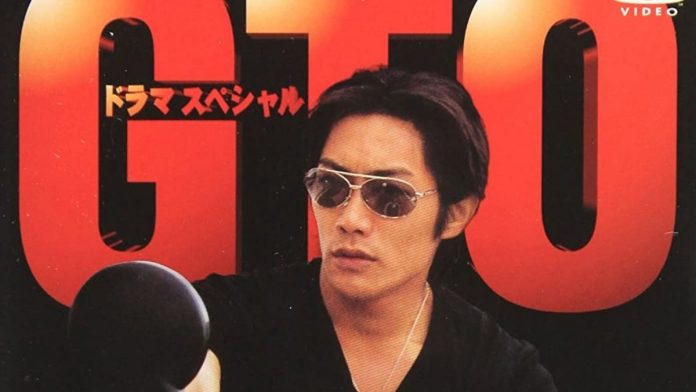
Before wholesome teacher tropes were a thing, there was Great Teacher Onizuka.
Eikichi Onizuka, an ex-biker gang leader with a questionable sense of professionalism but a heart of gold, becomes a teacher who changes his students’ lives with his ridiculous antics.
The 1998 Japanese drama starring Takashi Sorimachi perfectly captured the anime’s essence. He is Onizuka: wild, kind, and deeply human.
The show balances outrageous comedy with emotional lessons about empathy, redemption, and youth.
But the GTO story didn’t stop there.
In 2012, Japan released a modern remake starring Akira from EXILE TRIBE. It reintroduced the legend for a new generation while keeping that same unfiltered Onizuka energy.
It wasn’t as raw or rebellious as the original, but it still worked as a fun, updated tribute.
Then, in 2024, GTO: Revival brought Takashi Sorimachi back to the role after 25 years.
This special continues Onizuka’s story as an older, slightly wiser teacher facing a new generation of students in an even more complicated era.
Decades later, GTO remains one of the best examples of how J-dramas can bring the spirit of manga without overdoing the theatrics.
Whether you start with the classic, the movie, or the newest revival, Onizuka’s lessons still hit just as hard today.
11Blade of the Immortal (2017)
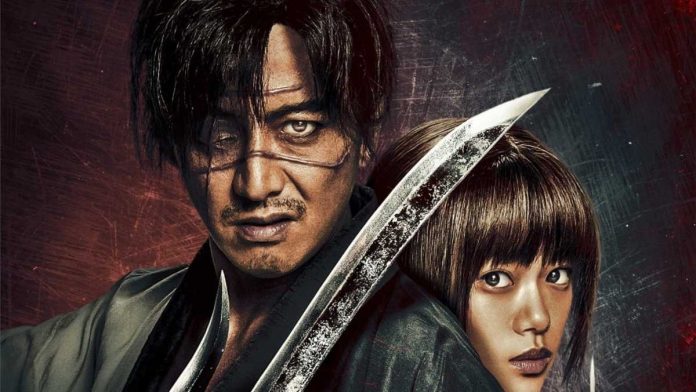
When it comes to blending beauty and brutality, no one does it like Takashi Miike.
His adaptation of Blade of the Immortal is both a sweeping samurai epic and a haunting reflection on death and vengeance.
Brutal, operatic, and visually stunning, it’s everything you want from a samurai revenge story.
Takuya Kimura delivers an amazing performance as Manji, an immortal swordsman seeking redemption by protecting a young girl out for revenge.
The sword fights are breathtaking: fluid, chaotic, and emotionally charged. Each duel feels like a dance, every swing of the blade carrying the weight of guilt and purpose.
The action balances savagery with elegance, and the film’s exploration of atonement hits harder than most anime adaptations ever dare to.
This one is a rare case where the live-action feels even darker than the anime.
12Bleach (2018)
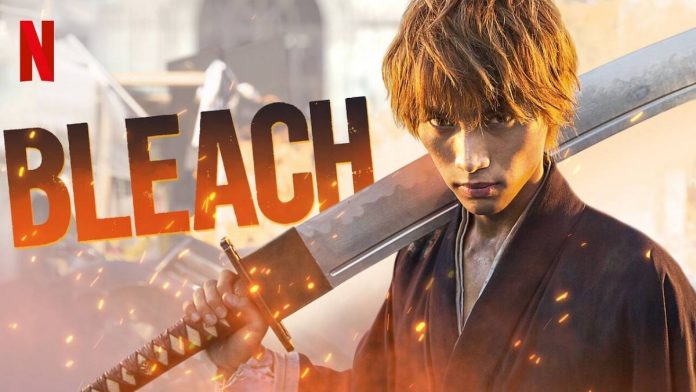
Bleach isn’t exactly an easy series to adapt. You’ve got spiritual powers, invisible monsters, giant swords, and hairstyles that could bankrupt a wig department.
So when the 2018 Japanese Bleach film dropped, everyone expected disaster. Instead, it turned out to be… surprisingly good.
Directed by Shinsuke Sato (who also helmed Gantz and Kingdom), the movie wisely doesn’t try to cram the entire manga into two hours.
Instead, it focuses on the “Substitute Shinigami” arc, the story of Ichigo Kurosaki, a high schooler who suddenly inherits the powers of a Soul Reaper from Rukia Kuchiki.
By keeping the scope tight, it balances supernatural spectacle with character depth.
The visual effects are far better than anyone expected: the Hollows look menacing and real, and the sword fights have real impact, blending anime flair with believable motion.
It’s clear that Sato and his team actually get what makes Bleach cool: that mix of sleek style, urban mystique, and emotional undercurrent.
Faithful without being stiff, cool without being cringey, this is one live-action adaptation that actually captures its anime’s soul.
13Cowboy Bebop (2021)
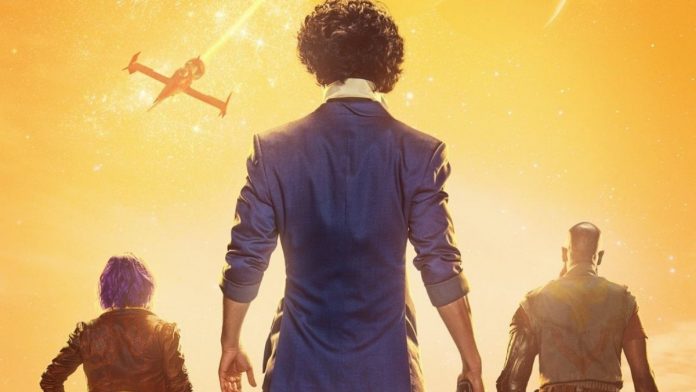
The Cowboy Bebop live action series can best be described as… not great, but not terrible either.
It sits somewhere in that weird middle ground: ambitious, and frustrating all at once. It wasn’t the disaster people made it out to be, but it definitely stumbled in key areas.
The Netflix adaptation nailed a lot: the aesthetic, the music, the casting of Spike and Jet, and plenty of individual moments that felt true to the original.
But it also missed the mark in some big ways. By stripping away the adventurous Bebop vibe and turning it into a more dramatic love story, it lost part of what made the original so special.
The show tried a little too hard to modernize its tone, and the pacing sometimes tripped over its own attempts to be cool.
And the interpretation of Vicious? That broke the mysterious, effortless vibe the anime had mastered.
Still, for all its flaws, Cowboy Bebop wasn’t unwatchable, just uneven. It showed how tricky it is to adapt something so iconic without losing the spark that made it special.
14Grand Blue (2020)

Ah, Grand Blue. The anime that made us laugh, choke on air, and question how any of these characters ever passed college.
The 2020 live action film doesn’t follow the manga or anime plot beat for beat, and honestly, that’s fine.
It takes creative liberties with the story, mixing events and characters around to fit a more condensed movie format.
The genius part? It keeps the tone perfectly intact.
The same ridiculous humor, the same unhinged energy, and of course, the same shirtless screaming sessions that made the original so iconic.
The jokes work because the cast goes all in. Ryusei Ryo as Iori Hazuki and Atsuhiro Inukai as Kohei Imamura bring the perfect balance of idiocy and charm, making every moment land.
Sure, purists might wish it followed the source more closely, but what matters here isn’t accuracy, it’s vibe. And the vibe is pure, glorious, beer-soaked nonsense.
Is it dumb? Absolutely. Is it hilarious? Even more so.
Grand Blue proves that a live action adaptation doesn’t have to copy every frame to feel right. As long as it captures the soul of the original, it’s a win.
15Yu Yu Hakusho (2023)
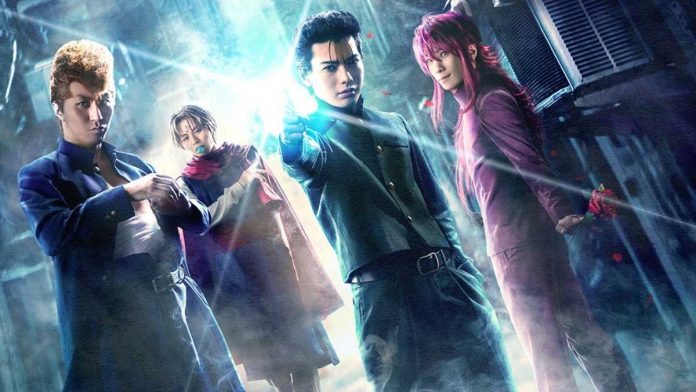
The Netflix Yu Yu Hakusho adaptation had a tough job: condensing a massive shonen epic into just five episodes. But Netflix Japan handled this with surprising care.
The story of Yusuke Urameshi, a delinquent who dies and becomes a Spirit Detective, gets a sleek, modern treatment that stays faithful to the original vibe.
While it inevitably rushes some character arcs and iconic moments, the show absolutely nails what made the series special.
The VFX for spirit powers look better than anyone expected, the casting is spot-on, and the fight choreography delivers that classic shonen punch (literally).
It captures Yoshihiro Togashi’s (the creator) signature blend of humor, grit, and heart, all without feeling like cheap cosplay.
Is it perfect? Nah. But it’s fun. And most importantly, it feels like Yu Yu Hakusho.
16Gokusen (2002-2009)
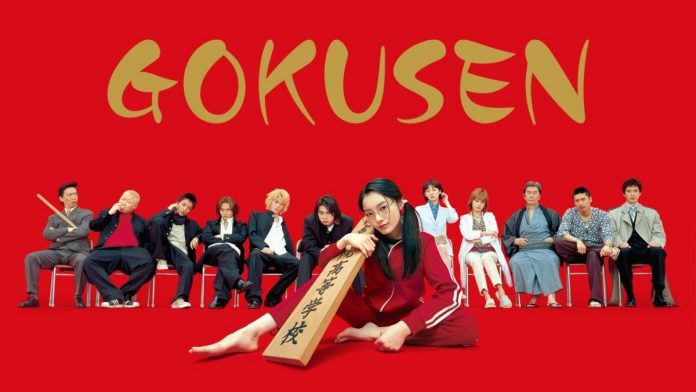
Before Assassination Classroom or GTO took over the “teacher saves delinquents” trope, there was Gokusen. And honestly, it still holds up.
Based on Kozueko Morimoto’s manga, Gokusen follows Kumiko “Yankumi” Yamaguchi, a passionate math teacher who also happens to be the heir to a Yakuza clan.
Her mission? Turn a group of rowdy, failing students into decent human beings with empathy, grit, and the occasional well-placed punch.
The live-action drama (2002–2009), starring the legendary Yukie Nakama, nails that perfect mix of comedy, heart, and action.
Yankumi isn’t just a funny character, she’s a force of nature. Her mix of idealism, toughness, and unshakable belief in her students makes her the delinquent whisperer.
The show ran for multiple seasons because people couldn’t get enough of her energy. Each season introduced a new class of misfits, keeping that “same vibe, new faces” rhythm fresh every time.
It’s goofy, heartfelt, and a little cheesy in that early-2000s way, but that’s exactly what gives it its charm.
17Gintama (2017-2021)

Adapting Gintama‘s fourth-wall-breaking, endless parodies, and absurd humor to live-action seemed like a fool’s errand. And yet… they did it.
The films fully commit to the insanity. The casting is spot-on, and they recreate the show’s most iconic gags and heartfelt moments with shocking accuracy.
What makes it work is the balance. Beneath all the nonsense, the bond between Gintoki, Shinpachi, and Kagura still hits hard.
The secret? The films never take themselves too seriously. They know Gintama is ridiculous, and they lean all the way in while staying true to the characters’ core.
It’s not for the uninitiated, but for fans, it’s a delightful treat.
18My Love Story!! (2015)

Not every anime needs epic battles or apocalyptic drama. Sometimes, you just want something wholesome. And My Love Story!! delivers exactly that.
The manga and anime were already adored for their sweetness, and the live action film keeps every bit of that charm intact.
The story follows Takeo, a big, intimidating guy who’s actually the kindest soul alive, as he falls for the shy and gentle girl named Yamato.
This film is a sugar rush of joy. It perfectly captures the fluffy, innocent tone of the original, with leads who are both endearing and full of chemistry.
It’s a feel-good movie that will leave you with the dumbest, happiest smile on your face.
In a world of edgy live action anime adaptations, My Love Story!! feels like a warm hug from your favorite anime couple.
19Assassination Classroom (2015-2016)
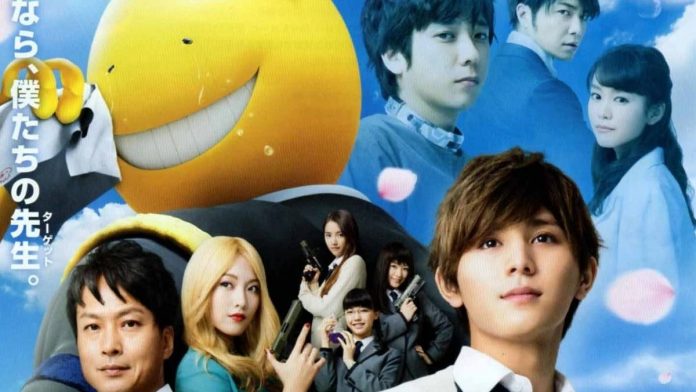
Assassination Classroom is one of those anime that you’d think could never work in live action.
A yellow, smiley-faced alien teaching students how to kill him? It sounds ridiculous but the live-action films pull it off with surprising warmth.
Both movies, based on the popular manga by Yusei Matsu, embrace the weirdness completely.
The CGI for Koro-sensei is goofy but charming, and the first film captures all the key emotional beats of the early arc. It’s funny, heartfelt, and unexpectedly touching.
The sequel, Assassination Classroom: Graduation, even manages to make you tear up, which, if you’ve seen the anime, you know is an impressive feat.
It’s proof that even the strangest anime premises can shine when there’s real heart behind them.
20Kakegurui (2018-2021)
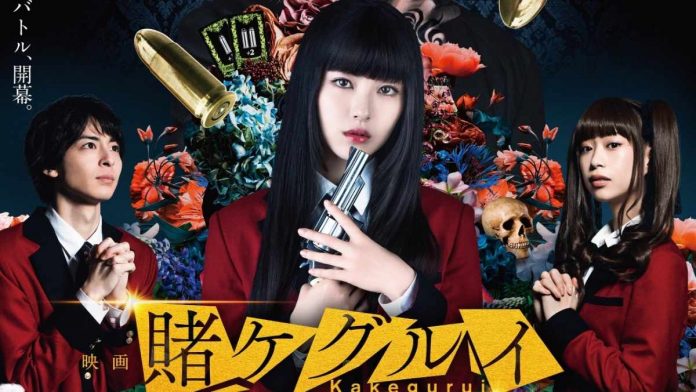
Kakegurui is one of those series that feels hard to adapt. It’s not just about betting, it’s about intensity, obsession, and faces so expressive they look like they broke out of a horror movie.
And again, somehow, the Japanese live-action adaptation nails it.
Released in 2018, followed by a second season and two movies, Kakegurui stays true to the manga’s over-the-top, high-stakes madness.
It doesn’t try to tone things down or make the story more “realistic.” Instead, it leans into the exaggeration, turning every scene into a theatrical rush of chaos and tension.
The cast dives headfirst into the insanity, especially Minami Hamabe as Yumeko Jabami, who balances calm charm and manic energy perfectly.
The rest of the cast matches that intensity, embracing the anime’s flair rather than fighting against it.
Visually, it mirrors the anime’s psychological tension and playful tone. A little ridiculous, sure, but that’s exactly what makes Kakegurui so fun.
21From Me to You: Kimi ni Todoke (2010-2023)
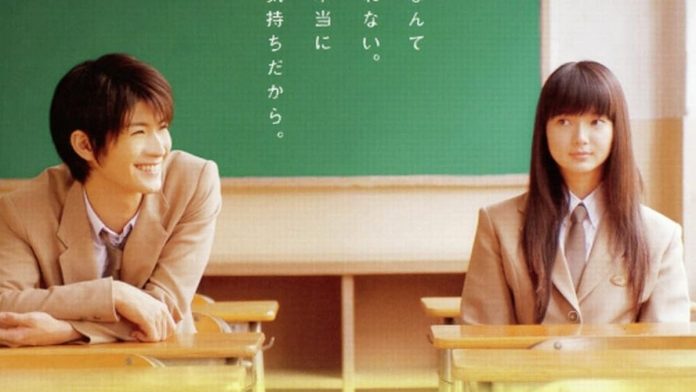
Not every adaptation needs high-stakes battles. Sometimes, you just want soft feels and gentle smiles.
From Me to You (Kimi ni Todoke) is a masterclass in simplicity done right.
The story follows Sawako, a shy girl often misunderstood because she resembles a horror movie character (Sadako), and Kazehaya, the kind boy who sees the real her.
The live-action versions, both the 2010 film and the 2023 Netflix series, handle those delicate emotions with such sincerity.
Instead of trying to modernize or dramatize, they trust the quiet magic of the story: two shy teenagers learning to reach each other through awkwardness and misunderstanding.
The chemistry feels genuine, the atmosphere warm, and the pacing gives the story space to breathe.
It’s sincere, beautifully acted, and full of that gentle warmth that defines the best shoujo romances.
22Nodame Cantabile (2006-2010)
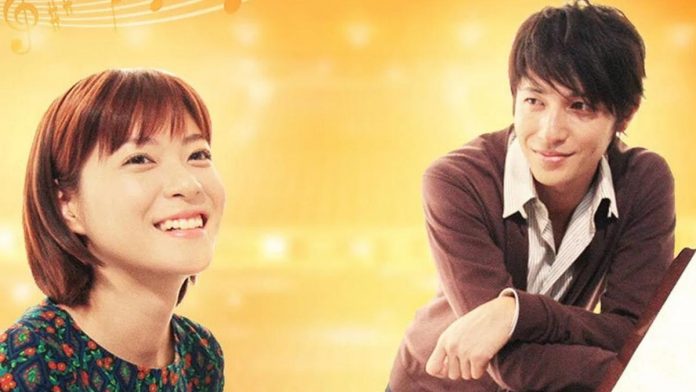
This original Japanese live-action drama (2006–2010) is based on Tomoko Ninomiya’s beloved manga of the same name.
Nodame Cantabile follows two music students: Chiaki, a perfectionist with dreams of becoming a conductor, and Nodame, a free-spirited pianist who plays by emotion, not rules.
Their chemistry is the heart of the show: a symphony of chaos, comedy, and unexpected tenderness.
What makes this adaptation so special is how it translates music as emotion. The performances are charmingly theatrical but never feel forced.
Hiroshi Tamaki (Chiaki) and Juri Ueno (Nodame) don’t just play their instruments, they embody their characters’ rhythms.
Their banter feels alive, their growth feels earned, and the comedic timing is chef’s kiss.
Add in some genuinely moving classical performances and sharp direction, and you’ve got a series that hits every note perfectly.
And the story doesn’t end there. The sequels, specials, and movies all carry the same heartwarming tone and musical soul.
23Gantz (2011)
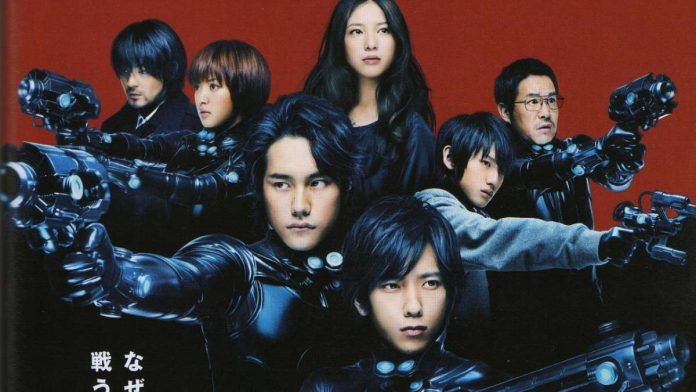
Gantz is the kind of manga that makes you go, “Nah, there’s no way they’ll ever film this.” And then… they did. Twice.
The two live-action films (Gantz and Gantz: Perfect Answer, both from 2011) condense a huge, violent saga into tight, stylish sci-fi thrillers.
The setup: people who die are revived by a mysterious black sphere and forced to hunt aliensm is as bizarre as it sounds, but the execution works.
It’s brutal, philosophical, and surprisingly emotional. The special effects hold up well, and the moral ambiguity that defined the manga stays intact.
Sure, it can’t fit in every detail from the source, but what it delivers is bold, gripping, and far more faithful than anyone expected.
24Your Lie in April (2016)

Few anime have broken as many hearts as Your Lie in April.
The original anime (and manga) devastated us all with its breathtaking animation, gut-punch storytelling, and a soundtrack that could make even Chopin cry.
The film retells the story of Kosei Arima, a piano prodigy paralyzed by trauma, and Kaori Miyazono, the free-spirited violinist who rekindles his love for music and for life itself.
What makes the movie work is its emotional honesty.
Kento Yamazaki gives Kosei a quiet vulnerability that feels raw but never forced, while Suzu Hirose’s Kaori radiates chaotic sunshine we remember: joyful, unpredictable, and quietly tragic.
The musical performances are beautiful, the tone melancholic yet hopeful, and the emotion stays true to the original.
The pacing moves a little faster than the anime, but it never loses its soul. And when that final performance arrives… you’ll still cry.
25Parasyte (2014-2015)
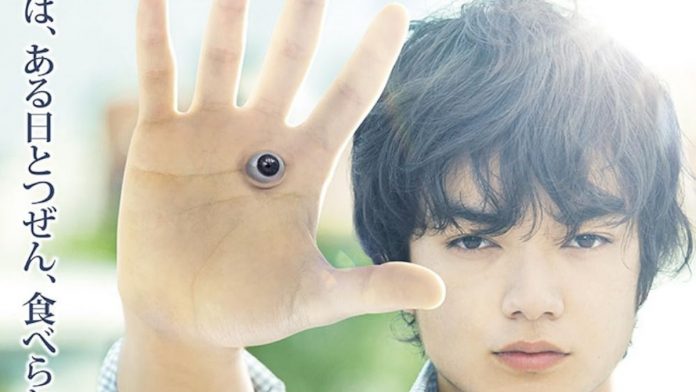
Based on Hitoshi Iwaaki’s manga, Parasyte is a chilling blend of sci-fi horror and existential dread.
The story follows Shinichi Izumi, a high schooler whose right hand is taken over by a sentient alien named Migi.
Together, they fight other parasites hiding among humans while debating what being “human” really means.
The two-part Japanese live-action adaptation (Parasyte: Part 1 and Part 2) handles the source material with care and clear respect for the source.
Directed by Takashi Yamazaki, the films take a grounded approach to the manga’s body-horror chaos.
The CGI is impressive (Migi looks great), and the tone captures the manga’s eerie atmosphere without relying on cheap gore.
The first film builds tension and mystery beautifully, while the sequel dives deeper into the story’s emotional and philosophical layers, giving it a surprisingly powerful conclusion.
Almost a decade later came the Korean spin-off Parasyte: The Grey (2024). It’s not a remake, but a reinvention.
Directed by Yeon Sang-ho (Train to Busan), it explores how the same alien invasion unfolds in Korea. It’s darker, grittier, and absolutely stands on its own.
Between the thoughtful Japanese films and the brutal, emotional Korean series, Parasyte proves that live-action sci-fi doesn’t have to lose its soul. It can be terrifying, philosophical, and profoundly human all at once.
26Anohana: The Flower We Saw That Day (2015)
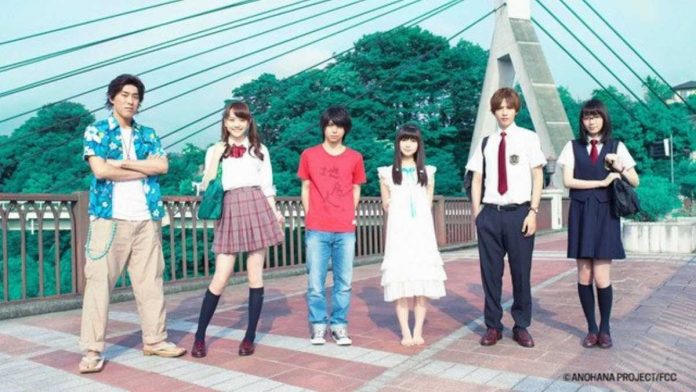
If Anohana didn’t make you cry, you’re either lying or made of stone.
The 2015 live-action adaptation had an almost impossible job: recreating one of the most emotional anime stories ever made.
The story follows a group of childhood friends reuniting years after the death of their friend Menma, whose ghost appears, asking them to help her move on.
It could’ve been cheesy or overly dramatic, but it never crosses that line.
The cast brings quiet sincerity to every scene, especially Minami Hamabe as Menma, who perfectly captures that mix of innocence and heartbreak.
The production stays grounded. No flashy effects, just honest emotion and nostalgia.
Sure, the story’s condensed, but it still lands where it matters. The awkward reunions, the bittersweet flashbacks, that final goodbye, they still hit right in the heart.
The Anohana live-action works because it remembers what the story is really about: not ghosts, but grief, friendship, and the long, painful beauty of letting go.
27Sonic the Hedgehog (2020-2024)
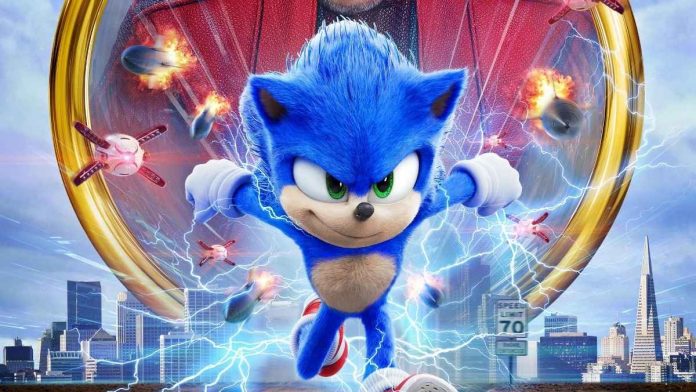
Okay, technically Sonic isn’t a Japanese anime adaptation, but it’s so deeply tied to Japanese gaming culture that it earns an honorary spot here.
And honestly? It’s one of the best examples of how to turn an iconic character into a live-action hit without butchering the source.
When the first trailer dropped back in 2019, fans lost it and not in a good way. That nightmare-fuel Sonic design? Yikes.
But to their credit, the filmmakers listened, redesigned him to look more like the classic Sega mascot. The result? They ended up creating a movie that was… actually great.
The 2020 film delivered everything fans wanted: fast-paced action, playful humor, and a Sonic (voiced by Ben Schwartz) who felt alive. He’s cocky, funny, and bursting with personality.
Then came Sonic the Hedgehog 2 (2022), which doubled down on the fun. We got Tails, Knuckles, the Chaos Emeralds, pretty much a full nostalgia buffet.
By the time Sonic 3 (2024) hit theaters, the franchise had cemented itself as one of the rare video game adaptations that truly works: consistent, self-aware, and respectful of its roots.
The films don’t try to reinvent the blue blur, they just let him be Sonic. Fast, funny, and full of attitude.
If there’s any adaptation that proves listening to fans can save a franchise, it’s this one. Sonic went from nightmare fuel to family favorite in record time.
Conclusion: Live Action Anime Might Be Good
In the end, live action anime adaptations don’t always deserve the bad reputation they get.
We’re in a new era where film studios actually care about getting it right: respecting the tone, the heart, and the fandom.
Sure, we’ll still get the occasional dud. But with creators who genuinely love the source, and fans who hold them accountable, the future looks bright.
These live action anime in this list prove that with the right cast, direction, and respect for the source material, anime can successfully leap from the screen into the real world.










